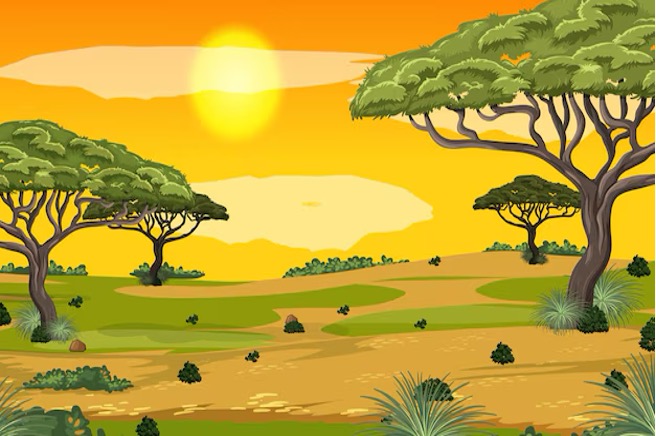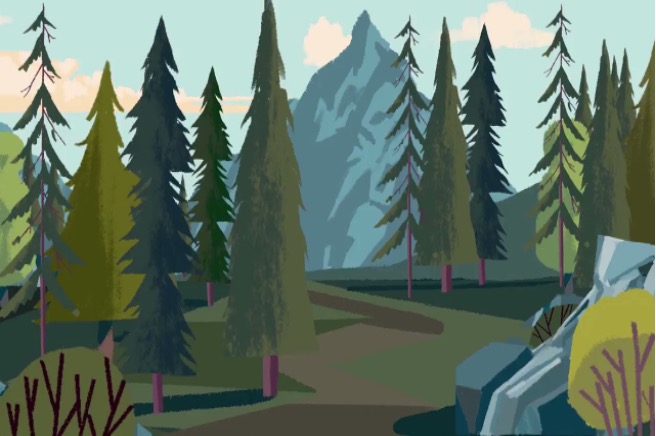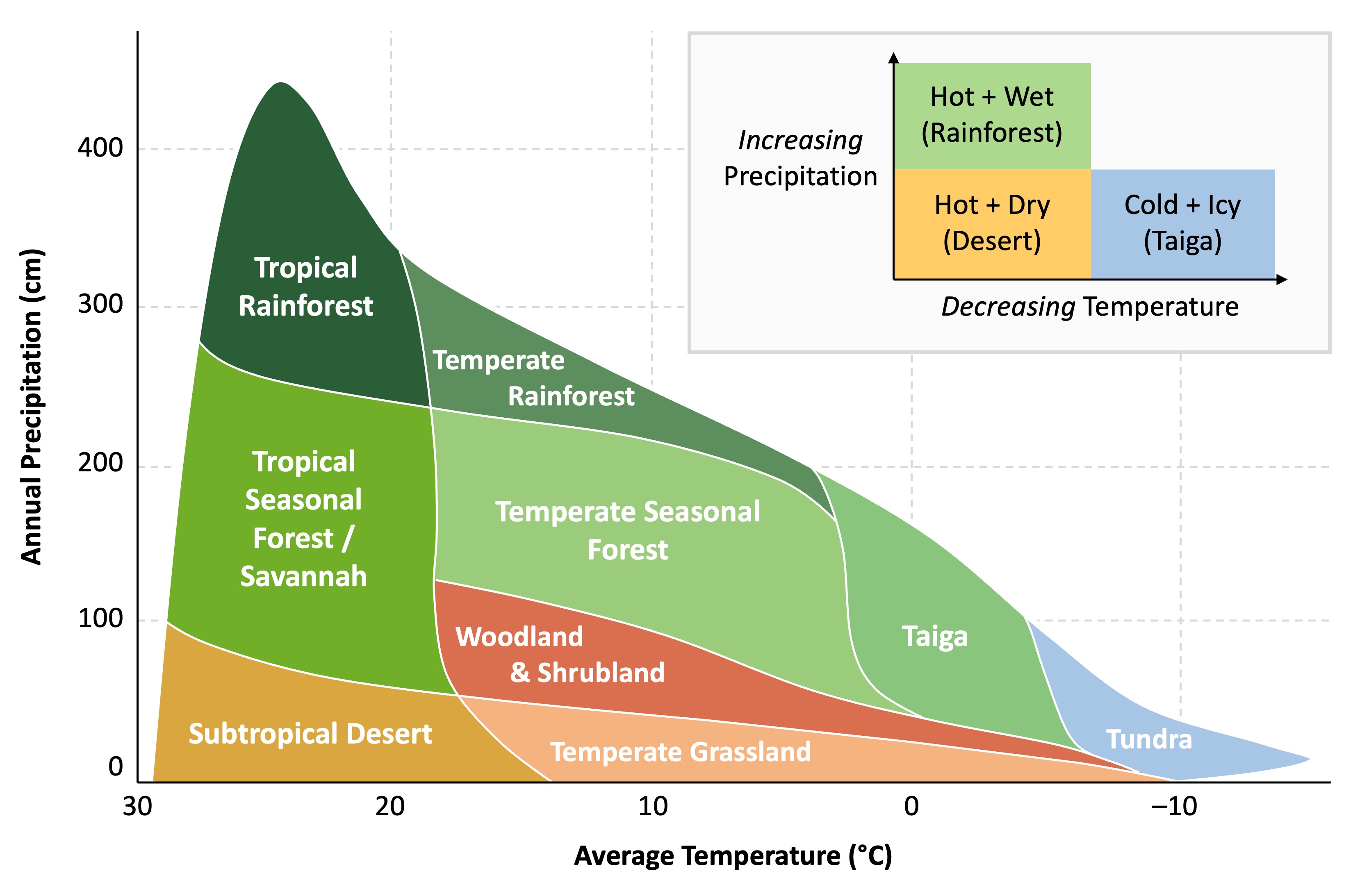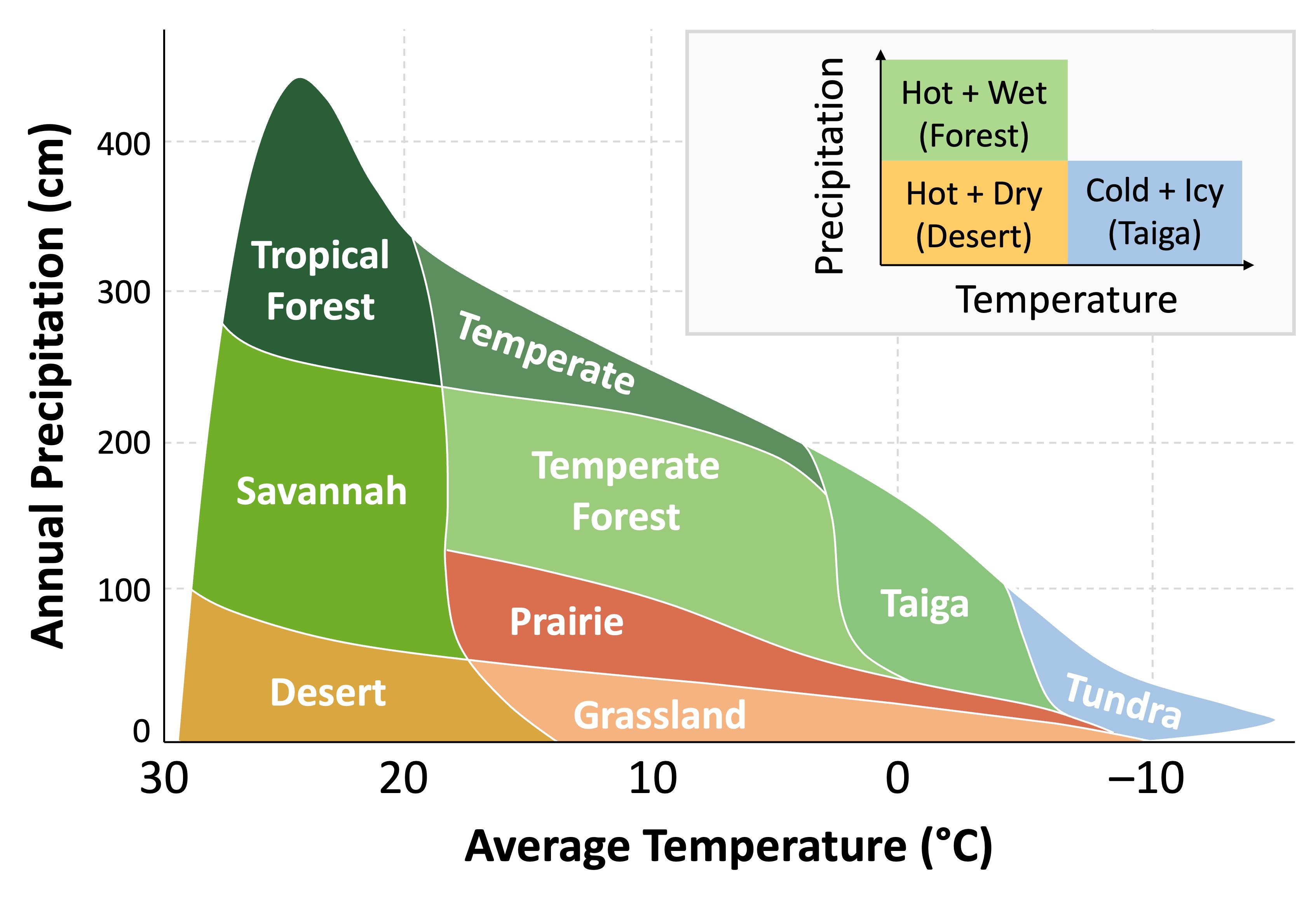

Biomes
A biome is a geographical area that has a particular climate and sustains a specific community of plants and animals
-
Climate conditions will vary according to lattitude and longitude, as well as altitude and proximity to the ocean
Biomes consist of many ecosystems that all contain similar communities due to convergent evolution
-
As all ecosystems within the biome have similar abiotic conditions, all species within the ecosystem are exposed to similar selection pressures
-
This means similar characteristics provide a survival advantage and become more common in the population
-
The communities in the different ecosystems may not share common ancestry, but have independently evolved along a common pathway
Types of Biomes
There are a number of different biomes that are recognised according to their specific characteristics
-
These include deserts, grasslands, tropical and temperate forests, taiga (boreal forests) and tundra
Desert
-
Deserts experience extreme temperatures, very low precipitation and minimal rainfall (< 30cm per year)
-
Communities consist of a small number of well-adapted species (e.g. desert plants are xerophytes)

Grasslands
-
Grasslands have moderate temperatures with wet and dry seasons (moderate rainfall but seasonal droughts are common)
-
There is not enough water for significant tree growth, communities consist of grazing animals and some predators

Temperate Forest
-
Temperate forests have moderate temperatures with clear seasonal changes
-
Deciduous trees are dominant, resulting in fertile soil (due to defoliation in autumn) and a high level of biodiversity

Tropical Rainforest
-
Tropical rainforests have a hot climate (consistently 25 – 30ºC) and very high levels of precipitation (> 250cm per year)
-
Have very high levels of diversity in both animal and plant species (vegetation organised into layers such as canopy and understory)

Taiga (Coniferous Forest)
-
Taigas are cold and icy (0ºC – 15ºC) with a small amount of precipitation (but high snow fall)
-
Taigas are dominated by coniferous trees and there is little variation in species

Tundras
-
Tundras have freezing temperatures (< 0ºC) and very little precipitation
-
Vegetation consists of low growing plants (e.g. mosses) with low levels of hibernating or migrating animal species

Biomes

Desert

Grassland

Temperate Forest

Tropical Rainforest

Taiga

Tundra
Biome Distribution
The main factors affecting the distribution of biomes are temperature and rainfall (precipitation)
-
These factors will vary according to latitude and longitude, as well as altitude and proximity to the ocean
In 1975, ecologist Robert Whittaker developed a graph that allowed for the identification of nine distinct biomes based on temperature and rainfall
-
Deserts typically have high average temperatures but low precipitation (hot and dry)
-
Rainforests typically have both high average temperatures and high precipitation (warm and wet)
-
Taigas typically have low average temperatures and reasonably low precipitation (cold and icy)
Whittaker’s Biome Graph







